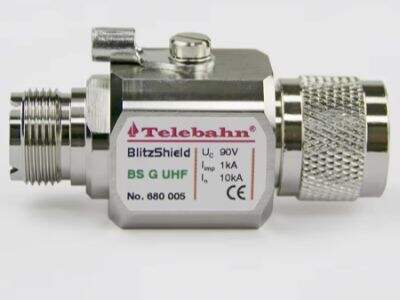This is where I want to tell you about something Telebahn really, really cares about: surge protection! This is something everyone should be aware of. If you don’t know what surge protection is, that’s okay! Its more about protecting your electronics from spontaneous surges of electricity that can come from the blue. These surges are termed power surges, and they may burn out your electronics. This can be everything from your phone and your TV, to your computer and your other gizmos: Special devices known as surge protectors.
There are a number of myths or false ideas about surge protection that can cause confusion for people. You can think of some statements that sounds true, but are they? So here are the top 5 myths about surge protection and let’s bust them together.
Myth #1: Power spikes only occur in storms
A lot of folks believe power surges happen only during storms, but that’s not the case! It is true that power surges may take place during storms, but they can happen at a number of other times as well. For example, power surges can occur when appliances, such as refrigerators or microwaves, go on and off. Surges can also occur due to problems with the electrical grid, the system that delivers electricity to your home. That means your electronics are at risk of damage at any time, not just during storms. So bear this in mind, folks.
Myth #2: Only expensive electronics need surge protectors
This is yet another common myth that has no validity! Power surges can damage any electronics, regardless of whether they are cheap or expensive. Not only can an expensive computer get damaged, so can a small lamp. Because surge protectors are generally not too pricey either, it is wise to use them for all of your electronics (even if they are worth a lot of money). Surge protectors keep everything safe, and they help keep them safe from little small things like a toy or a lamp, or a big, a big, you know, a computer.
Myth No. 3: All power strips provide surge protection
It’s crucial to realize not every power strip offers surge protection. Many power strips have no surge protection, some have it built-in. This means you have to check and ensure that the power strip you are using specifically states that it has surge protection. If it doesn’t state that, then it won’t provide any device protection in the event of a power surge. So keep an eye out for this type of information to keep your electronics safe.
Myth #4: Surge protectors will always protect devices
Sorry, but this is not true either. Surge protectors are meant to help absorb and redirect the excess electricity that’s produced during a power surge, but they don’t always ensure that your devices will be entirely safe. Many factors can influence how effective a surge protector is, including the type of surge and the quality of the surge protector itself. The things plugged into the surge protector also have an impact. Surge protectors are very useful, but it’s worth noting that they don’t guarantee that your electronics will never get ruined.
Myth #5: You only need to replace surge protectors after a power surge
This myth is a slightly tricky one. Certain surge protectors can be reset following a power outage — meaning you can use them once more without needing a replacement. But others will need to be replaced after a spike or outage. It’s very important that you read the instructions that you got with your surge protector or consult the company to see whether you need to replace it. Even if your surge protector can be reset, be mindful that after facing a surge it may not function as well as it previously did.

 EN
EN
 AR
AR
 BG
BG
 HR
HR
 CS
CS
 DA
DA
 NL
NL
 FI
FI
 FR
FR
 DE
DE
 EL
EL
 HI
HI
 IT
IT
 JA
JA
 KO
KO
 NO
NO
 PL
PL
 PT
PT
 RO
RO
 RU
RU
 ES
ES
 SV
SV
 CA
CA
 TL
TL
 IW
IW
 ID
ID
 LV
LV
 LT
LT
 SR
SR
 SK
SK
 SL
SL
 UK
UK
 VI
VI
 SQ
SQ
 ET
ET
 GL
GL
 HU
HU
 MT
MT
 TH
TH
 TR
TR
/images/share.png)
